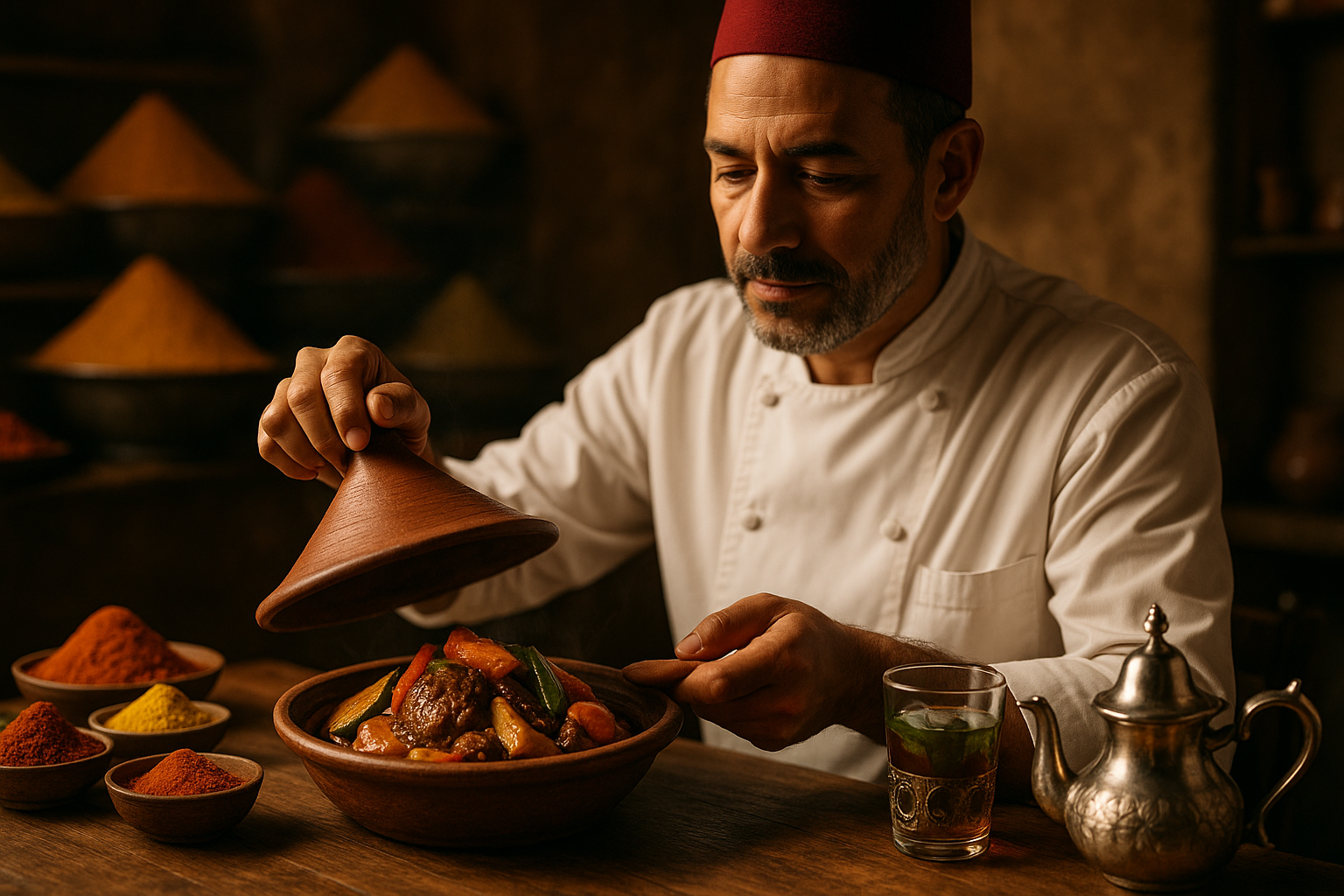Discovering the Magic of Moroccan Cuisine: A Culinary Adventure
Moroccan cuisine, steeped in history and culture, offers a tantalizing journey of diverse flavors. This article takes you on an immersive exploration of Moroccan cuisine, unlocking the secrets of its unique culinary techniques, and introducing you to some of its most popular dishes.

The Rich Tapestry of Moroccan Cuisine
Morocco’s geographical location has a profound influence on its cuisine. The intermingling of Arab, Berber, Moorish, French, Middle Eastern, Mediterranean, and African cuisines has led to a fascinating blend of flavors that is uniquely Moroccan. The country’s reliance on locally sourced produce, such as olives, figs, and dates, and spices like saffron, cumin, and coriander, lends an earthy, vibrant character to its dishes.
The Art of Moroccan Cooking Techniques
Moroccan cooking involves an array of techniques that enhance the flavors of its ingredients. The most iconic is the slow cooking process in a clay pot known as a ‘tagine’. The unique conical shape of the tagine allows for a moist, hot cooking environment, resulting in tender, flavorful dishes. Baking in a traditional wood-burning oven, also known as a ‘ferran’, is another technique that gives Moroccan food its distinct taste.
A Taste of Morocco’s Signature Dishes
No Moroccan culinary journey would be complete without tasting some of its signature dishes. Couscous, considered the national dish, is a staple that is often served with meat and vegetables. Tagine, named after the pot it’s cooked in, is a slow-cooked stew that can be made with different meats, fish, and vegetables. Pastilla, a sweet and savory pie, is a traditional dish often reserved for special occasions.
The Ritual of Moroccan Mint Tea
Moroccan mint tea, dubbed the ‘Moroccan whiskey,’ is much more than just a drink. This sweet, refreshing beverage is a symbol of Moroccan hospitality and is served throughout the day. The pouring technique, from a height to create a frothy top, is as much a part of the ritual as the drinking itself.
Moroccan Spices: The Heart of the Cuisine
Spices are at the heart of Moroccan cuisine, adding depth and complexity to its dishes. Some of the most commonly used spices are cumin, coriander, saffron, chilies, dried ginger, cinnamon, and paprika. Ras el hanout, a blend of the best spices a seller has to offer, is a key component in many Moroccan dishes.
The Spice of Life
-
Moroccan cuisine is known for its vibrant use of spices, not just for flavor but for their health benefits too.
-
Tagines are a unique Moroccan cooking technique that allows for a slow cooking process, resulting in tender, flavorful dishes.
-
Moroccan mint tea is more than just a beverage; it’s a symbol of hospitality and an integral part of the country’s culture.
Moroccan cuisine offers an exciting culinary adventure, tantalizing your taste buds with its unique blend of flavors and cooking techniques. By exploring Moroccan cuisine, you not only learn about its rich culinary heritage but also gain a deeper appreciation for the role of food in shaping a country’s culture and traditions.




